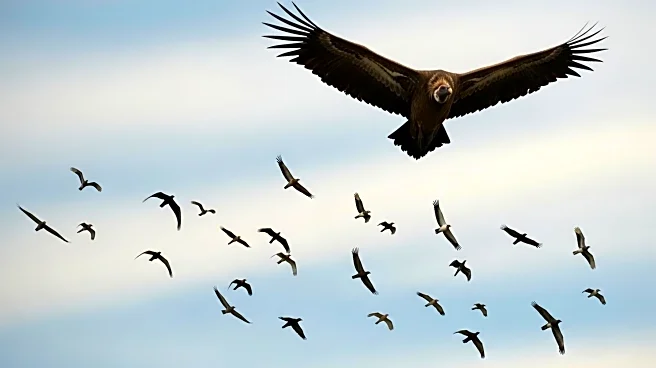What is the story about?
What's Happening?
Researchers from the University of Exeter have discovered that leopards can be individually identified by their unique roars, achieving an accuracy rate of 93%. This breakthrough offers a novel method for monitoring these elusive big cats, which are often challenging to study due to their solitary and nocturnal nature. The study was conducted in Nyerere National Park, Tanzania, using camera traps and autonomous recording devices to capture visual and auditory data. The findings highlight the potential of bioacoustic monitoring as a non-invasive approach to studying leopard populations, aiding in conservation efforts.
Why It's Important?
The discovery of leopards' unique roars provides a new tool for conservationists to monitor and protect these vulnerable animals. Leopards face threats from habitat loss and human-wildlife conflict, making innovative monitoring techniques crucial for their preservation. The study emphasizes the importance of integrating multiple technologies to gather comprehensive data on wildlife, enhancing our understanding of ecosystems and informing effective conservation strategies. This advancement in bioacoustic monitoring could lead to more accurate population estimates and improved conservation efforts for leopards and other large carnivores.
AI Generated Content
Do you find this article useful?













